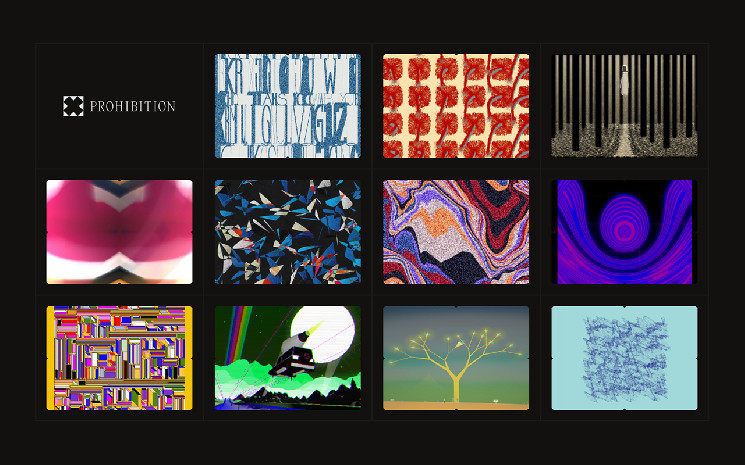Web3 innovation studio VenturePunk is rolling out Prohibition, a Arbitrum-based generative art platform and marketplace.
The inaugural collection for the platform is “Monospatial” by generative artist Emily Edelman, which features a series of generative non-fungible token (NFT) lettered designs. The collection will open for sale Tuesday afternoon with a supply of 100 tokens at a mint price of 0.05 ETH, or roughly $95 at press time.
Backed by investors including Erick Calderon (aka Snowfro), CEO of generative art platform Art Blocks, and Devin Finzer, CEO of marketplace OpenSea, Prohibition allows any artist to create, mint and sell a generative art collection.
See Also: Who Are the 81 Recipients of Snowfro’s Latest Squiggle Mint?
Using the Art Blocks Engine, a tool built by Art Blocks to bring generative art on-chain, artists can code their designs on Prohibition to mint their collections on Arbitrum, which is an Ethereum layer 2 blockchain. Additionally, buyers can explore and purchase other generative art collections through Prohibition’s native secondary marketplace.
Jordan Lyall, founder and CEO of VenturePunk and former DeFi Product Lead at Web3 infrastructure firm ConsenSys told CoinDesk that as generative art has become increasingly popular in the past year, its barriers to entry have become increasingly high. Not only is it rare to find a code-savvy artist who can rise to the ranks of popular creators Tyler Hobbs or Dmitri Cherniak, but it’s also hard for artists to be selected to mint their work on a platform in the first place. According to Lyall, Art Blocks only works with 2% of the artists that apply to create a collection.
In releasing Prohibition, he aims to recreate the early days of creating and trading generative art on Ethereum by breaking down the barriers and inviting all artists to mint.
“It doesn’t matter what you know, where you come from, what your background is, where in the world you live – anyone can use our tools to create generative art,” said Lyall. “We really think that if Art Blocks is HBO, Prohibition is YouTube where anybody can upload [their work.]”
Lyall added that in choosing a network to support, Arbitrum made the most sense for its “90-95% savings in gas fees,” compared to Ethereum, which may cost several ether for a creator to deploy an entire collection on-chain.
Additionally, implementing the Art Blocks Engine into the platform – which companies including Web3 fashion brand 9dcc and NFT gallery Bright Moments have similarly done – helps ease the minting process, making generative art creation accessible for artists.
“We’re the first to take these Art Block Engine protocols and open them up for everybody, so anybody can use these tools,” said Lyall. “And not only that, we’re the first Art Blocks Engine partner to redesign the artist experience.”
Lyall added that in the coming months, he plans to add features to ease the minting process on Prohibition further, including a match-making service that helps pair developers with artists to produce collections, as well as a no-code solution for artists to bring their work to life.
In November, Prohibition raised $1.5 million in pre-seed funding to build out its generative art platform. In addition to Calderon and Finzer, it received capital from investment firm Bain Capital Crypto and Ethereum sidechain Polygon’s venture wing Polygon Ventures.
Additionally, Prohibition isn’t the only platform that’s recently implemented the Art Blocks Engine. In June, 279-year-old auction house Sotheby’s announced its plans to utilize the Art Blocks Engine to fuel its own generative art program.
Read More: Dmitri Cherniak’s ‘The Goose’ NFT Sells at Sotheby’s Auction for $6.2M



